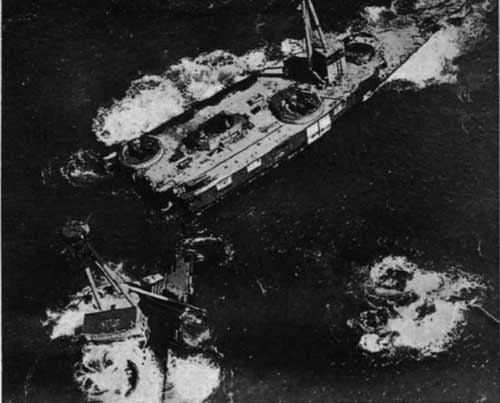Sunday Battleship Blogging: Armada Espana
 The battleship building fever that gripped the world in the wake of Mahan’s Influence of Sea Power Upon History extended to small navies as well as large. Of course, small navies couldn’t afford to build dreadnoughts in either the size or number of the larger powers, so had to settle. Spain, having lost much of its naval strength and virtually all of its overseas empire in the Spanish-American War, concluded that dreadnoughts were necessary for national defense, and proceeded to build the three smallest dreadnought battleships ever constructed. It was somewhat unusual for a navy as small as the Spanish to construct its own dreadnoughts, as most similarly situated powers simply placed orders at British yards. Had Spain done this, the ships might have been seized by the Royal Navy at the beginning of World War I, as happened to Turkish and Canadian ships under construction in British yards. As it was, the Spanish worked from a British design, and were thus able to keep their ships.
The battleship building fever that gripped the world in the wake of Mahan’s Influence of Sea Power Upon History extended to small navies as well as large. Of course, small navies couldn’t afford to build dreadnoughts in either the size or number of the larger powers, so had to settle. Spain, having lost much of its naval strength and virtually all of its overseas empire in the Spanish-American War, concluded that dreadnoughts were necessary for national defense, and proceeded to build the three smallest dreadnought battleships ever constructed. It was somewhat unusual for a navy as small as the Spanish to construct its own dreadnoughts, as most similarly situated powers simply placed orders at British yards. Had Spain done this, the ships might have been seized by the Royal Navy at the beginning of World War I, as happened to Turkish and Canadian ships under construction in British yards. As it was, the Spanish worked from a British design, and were thus able to keep their ships.
The Espana, Alfonso XIII, and Jaime I each displaced 15000 tons, carried 8 12″ guns,  could make 19 knots and measured 459′ in length. The battleships were really not capable of any mission other than coastal defense, which occupied most of their service time. Unfortunately, even this mission proved hazardous. Espana hit a rock on August 26, 1923, broke apart, and sank. Alfonso XIII was subsequently renamed Espana, but did not have much more success. After being seized and refitted by Nationalist forces in 1936, the new Espana drifted over a Republican mine and sank. The completion of Jaime I was delayed seven years by the scarcity of materials during World War I. While under repair in June 1937, Jaime I caught fire and exploded.
could make 19 knots and measured 459′ in length. The battleships were really not capable of any mission other than coastal defense, which occupied most of their service time. Unfortunately, even this mission proved hazardous. Espana hit a rock on August 26, 1923, broke apart, and sank. Alfonso XIII was subsequently renamed Espana, but did not have much more success. After being seized and refitted by Nationalist forces in 1936, the new Espana drifted over a Republican mine and sank. The completion of Jaime I was delayed seven years by the scarcity of materials during World War I. While under repair in June 1937, Jaime I caught fire and exploded.
After the end of World War I Spain considered, but rejected, a larger naval program. Expense was probably the largest reason, although the “naval holiday” declared by the Washington Naval Treaty undoubtedly played a part. The designs under study by the Spanish Navy would, if constructed, have been some of the largest battleships and battlecruisers in the world at the time. The existence of such ships would have made Spain’s situation in World War II more complex, as they might have provided enough of a threat to British naval power to justify a preventative attack of the sort that the Royal Navy launched against the French fleet at Mers El Kebir.


